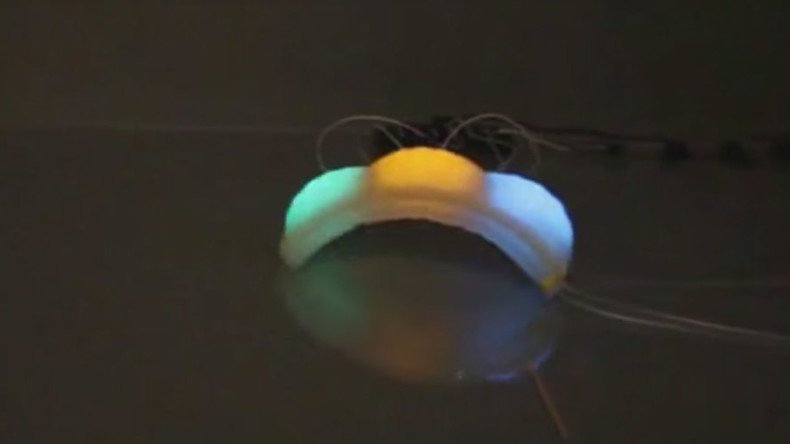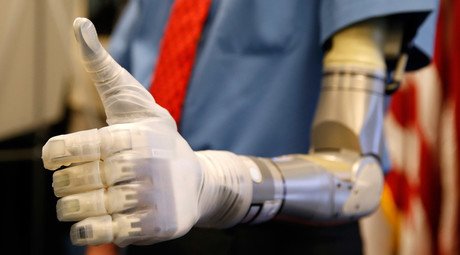Soft robot breakthrough: Artificial ‘octopus skin’ stretches to 6 times original size, changes color

Robots may be the future, but scientists are looking to sea-dwelling octopuses and squid in order to learn how to design them. A newly created artificial “octopus skin” can actually stretch and change colors much like the intelligent cephalopods can.
What’s more, the development could be a boon to a variety of different types of robots and products in numerous fields, including health care, consumer electronics, and even rescue teams, according to the Cornell University team behind the invention.
The effort was inspired by creatures like the octopus, which can stretch and even change the texture of their skin to fit into hard-to-reach places. The new electroluminescent “skin” can stretch more than six times its original size, bend, and display changing colors at the same time.
Robert Shepherd, the leader of the research group, said the hope is to use the technology in “soft robots,” or robots that are made with flexible material so that they can move more easily without breaking and interact more safely with humans.
As you can see about a minute and a half into the video, the small soft robot prototype is able to bend and stretch on its own as it moves across a hard surface, all while flashing three different colors. Parts of the material can also inflate to mimic the “walking” motion of a worm.
The material is made of layers of transparent hydrogel that can conduct electricity, which themselves are placed around an elastomer sheet that can insulate and store an electrical charge while it stretches and bends.
"We can take these pixels that change color and put them on these robots, and now we have the ability to change their color," Shepherd said in a statement.
"Why is that important? For one thing, when robots become more and more a part of our lives, the ability for them to have emotional connection with us will be important. So to be able to change their color in response to mood or the tone of the room we believe is going to be important for human-robot interactions."
Potentially, material like this could also be used to create wearable technology – right now limited mostly to bracelet-like products such as Apple Watch or Fitbit – that can conform to the shape of an individual’s body.
“You could have a rubber band that goes around your arm that also displays information,” said Chris Larson, a Cornell graduate student who is part of the team, said to the Cornell Chronicle. “You could be in a meeting and have a rubber band-like device on your arm and could be checking your email. That’s obviously in the future, but that’s the direction we’re looking in.”
Scientists are also intrigued by the possibility of using soft robots as part of rescue teams, since they may be able to move through rubble more safely than humans.
Notably, this isn’t the only technology influenced by cephalopods like the octopus. Another kind of synthetic material, developed in 2014, could change color and even its texture when hit with electric volts.
The material, developed by scientist at MIT and Duke, can go from having a smooth texture to one featuring bumps, and can also create a colored pattern on demand.













